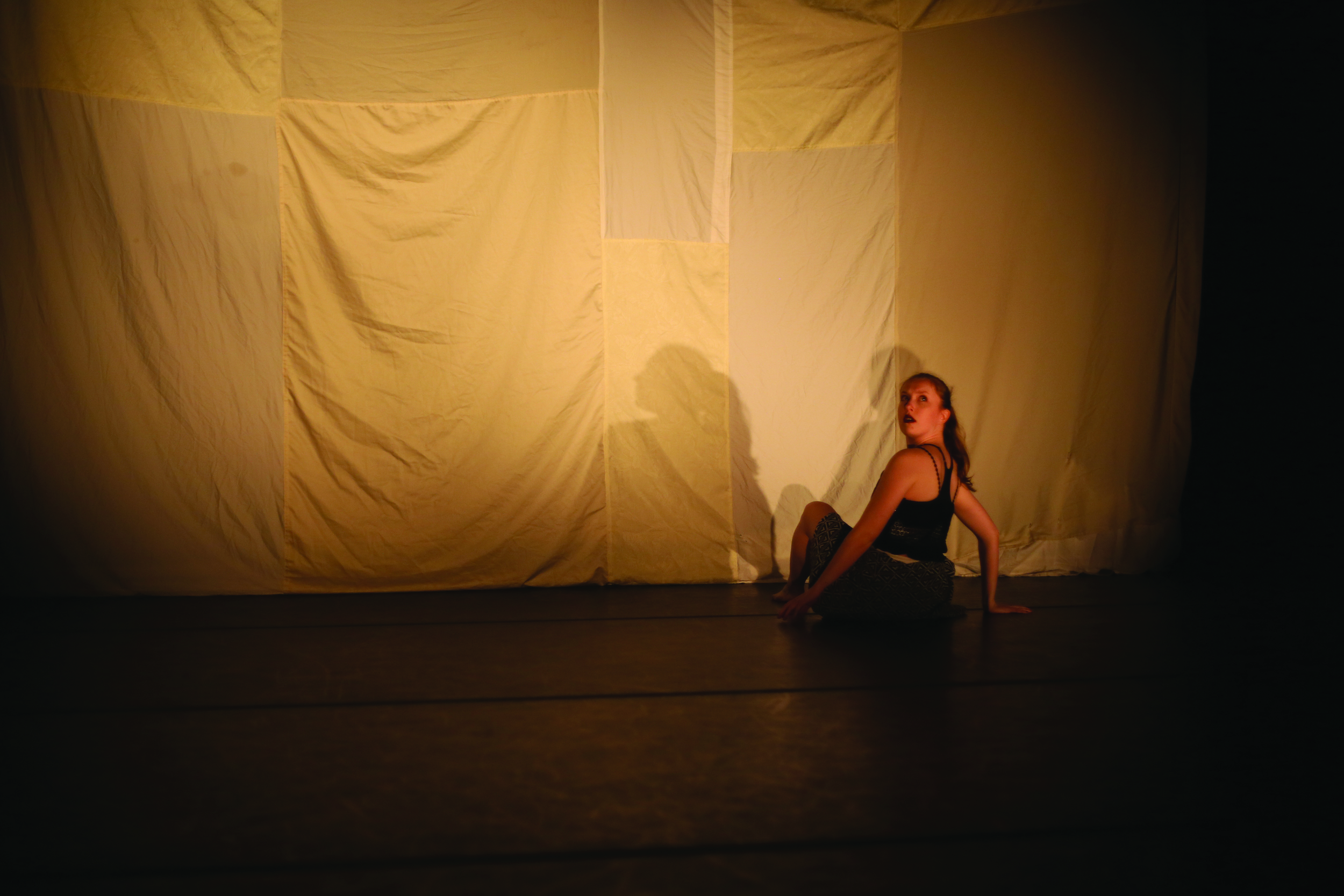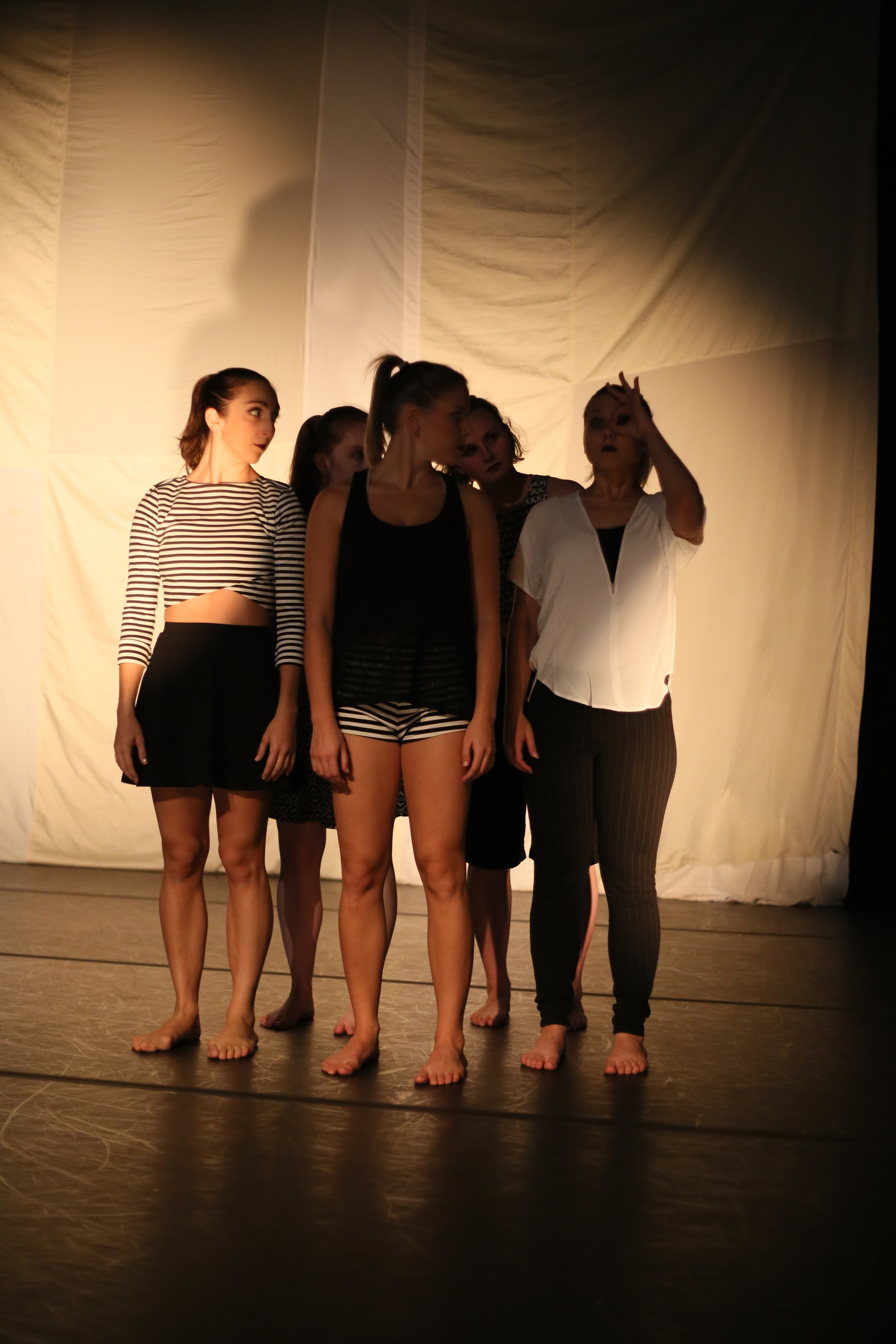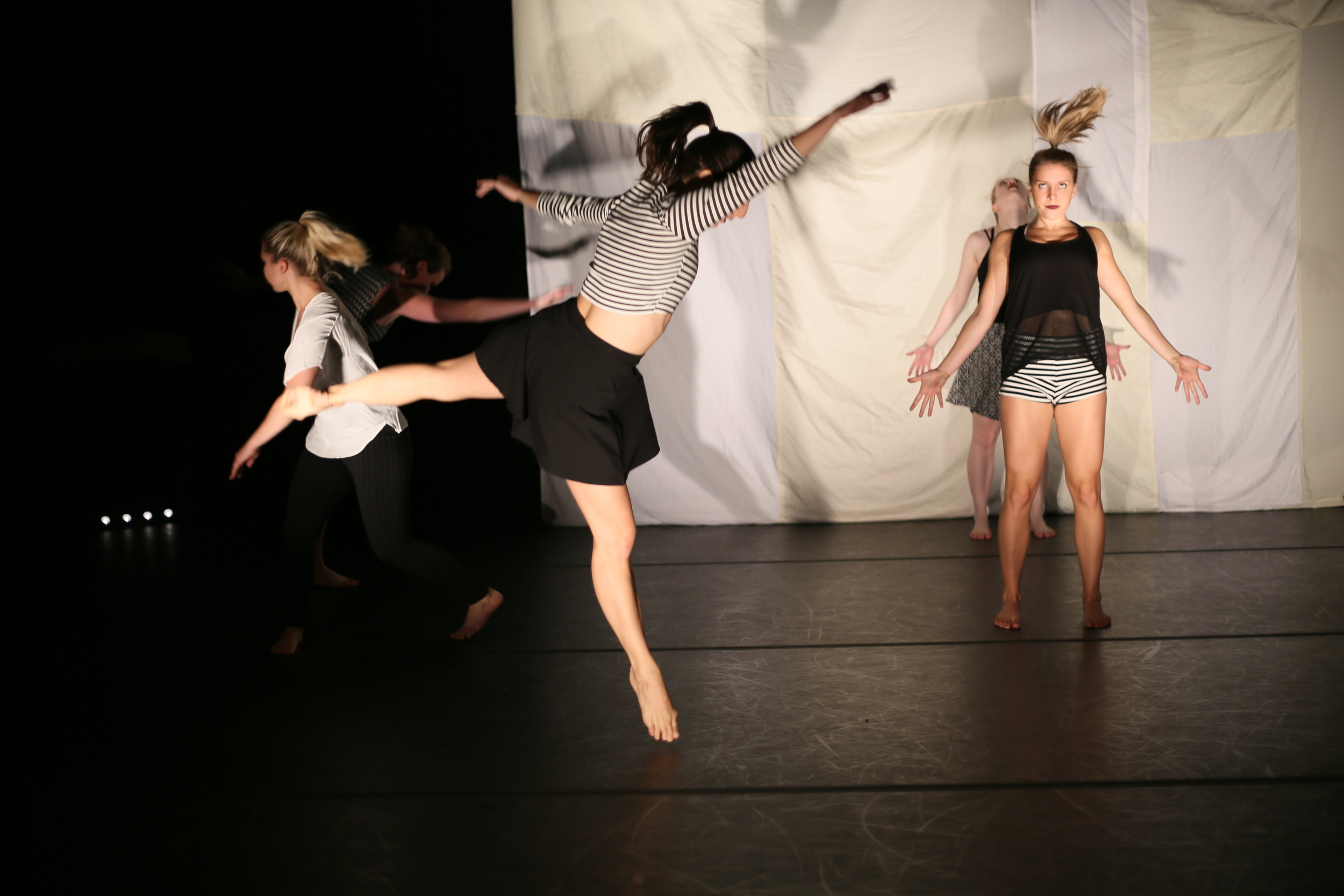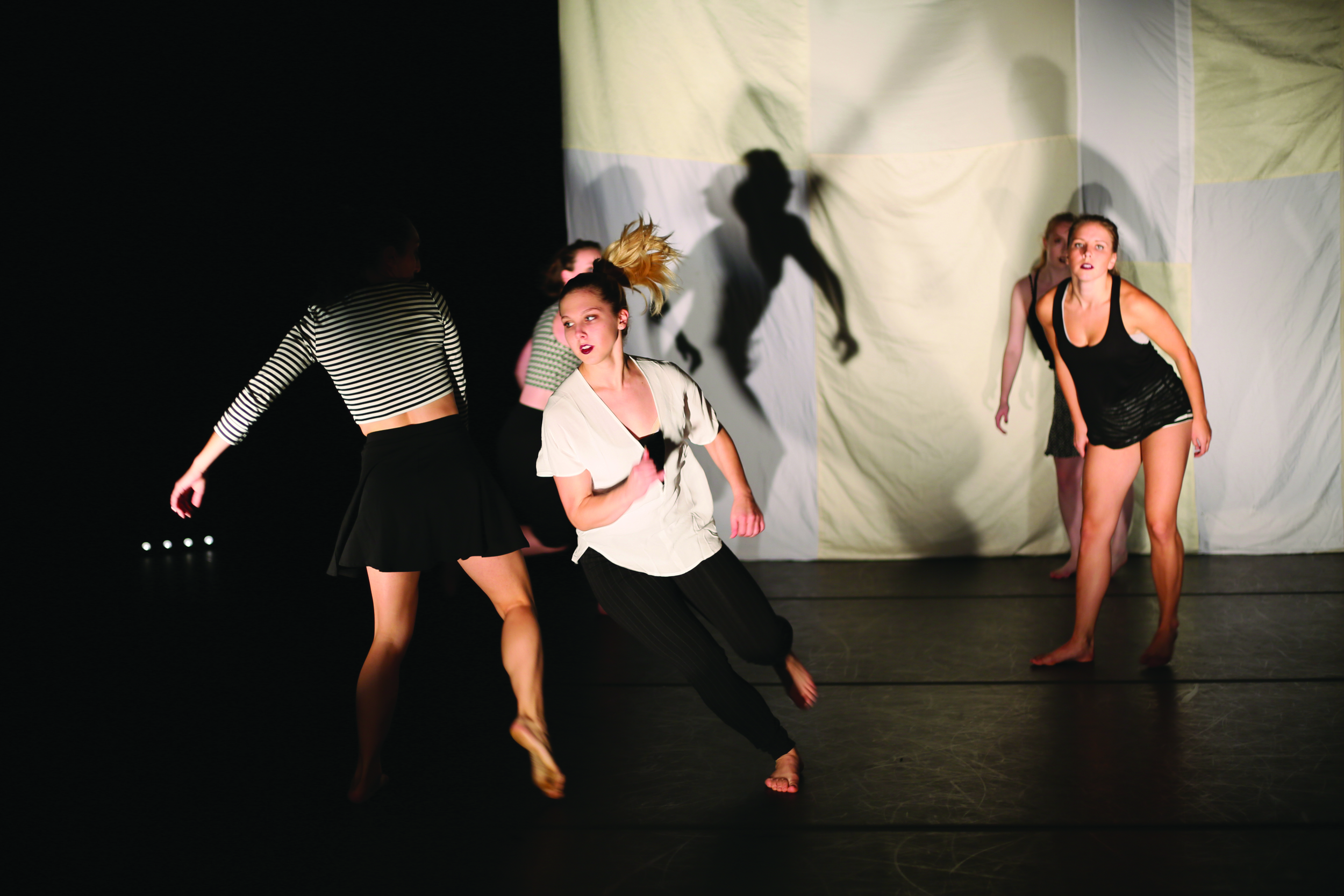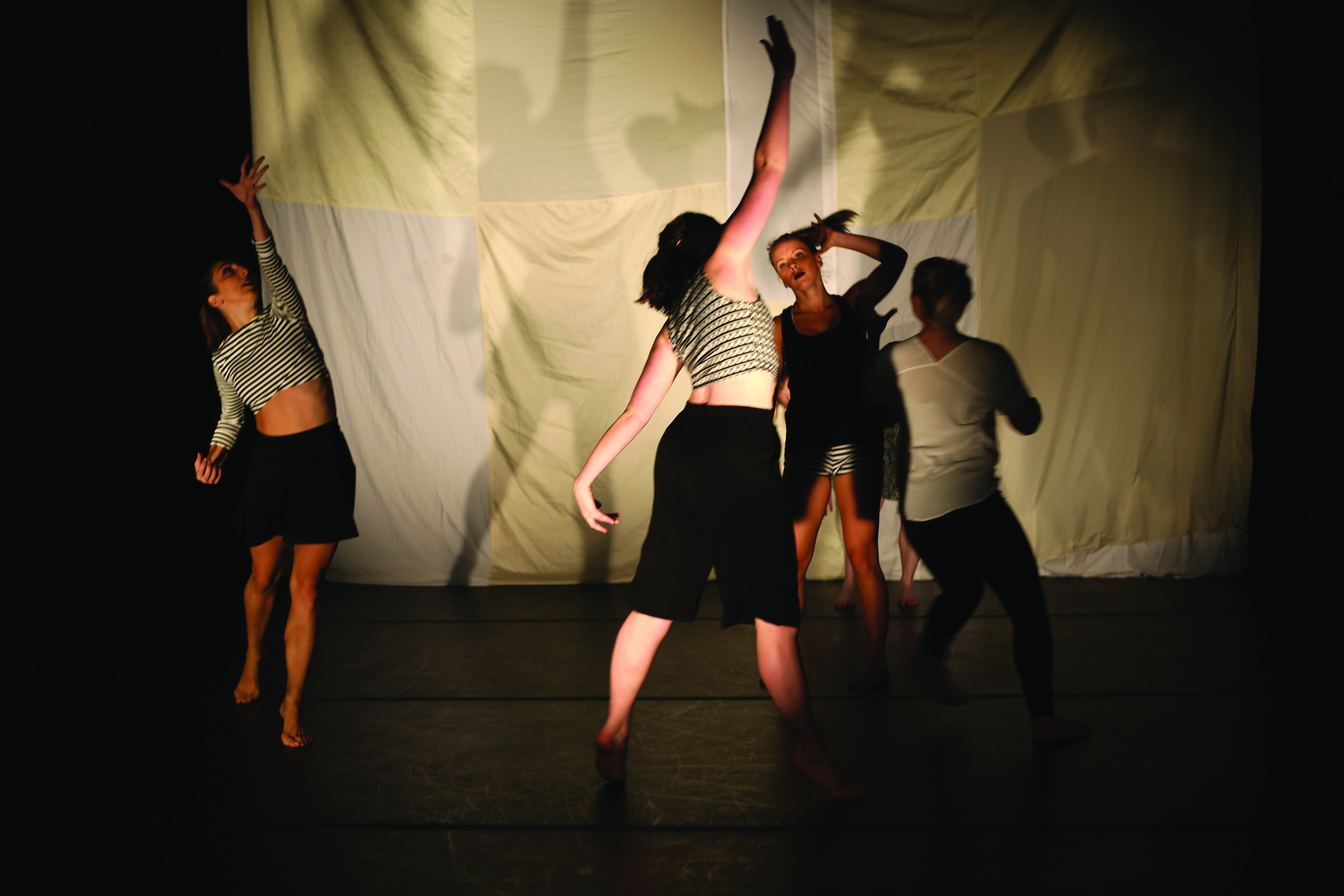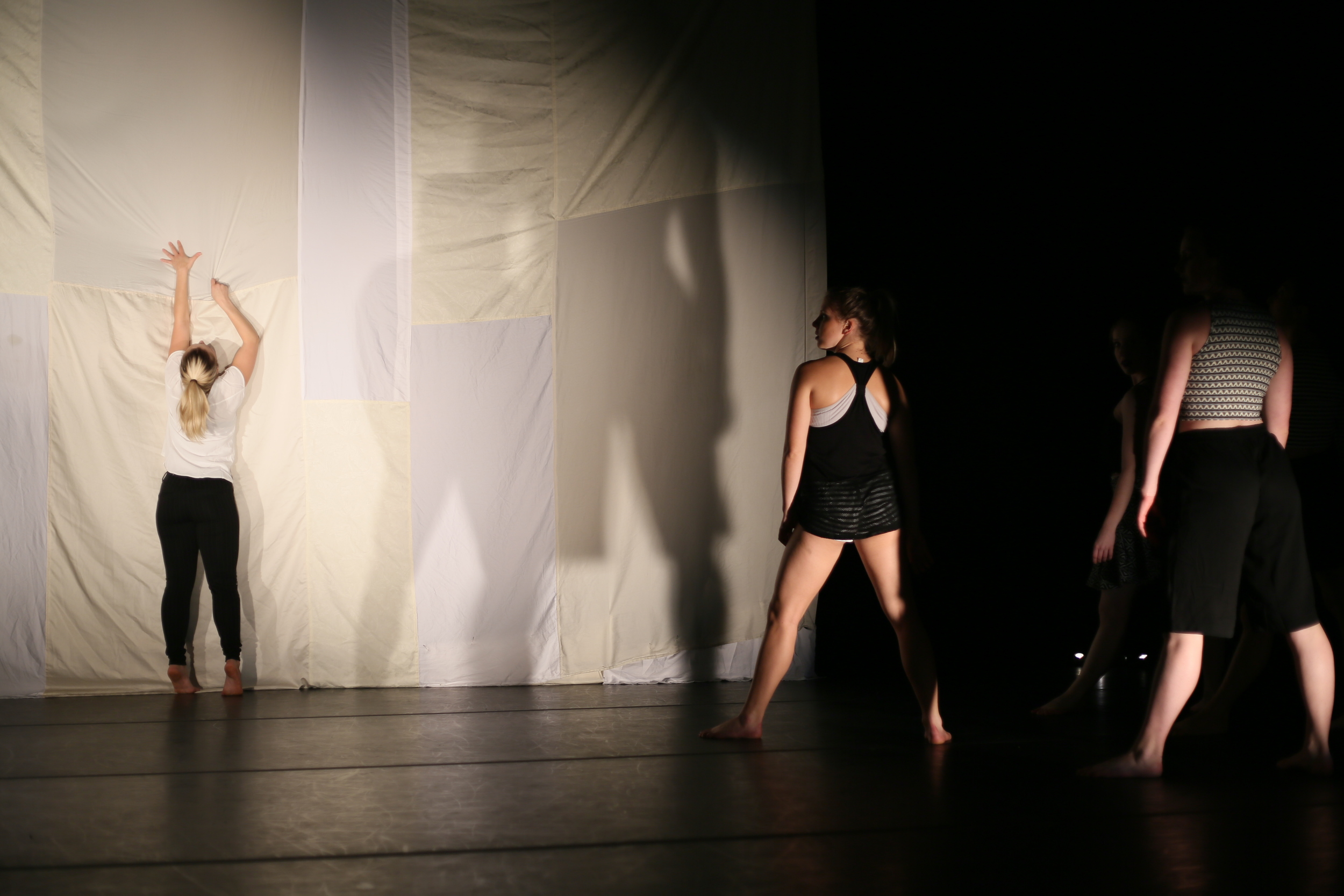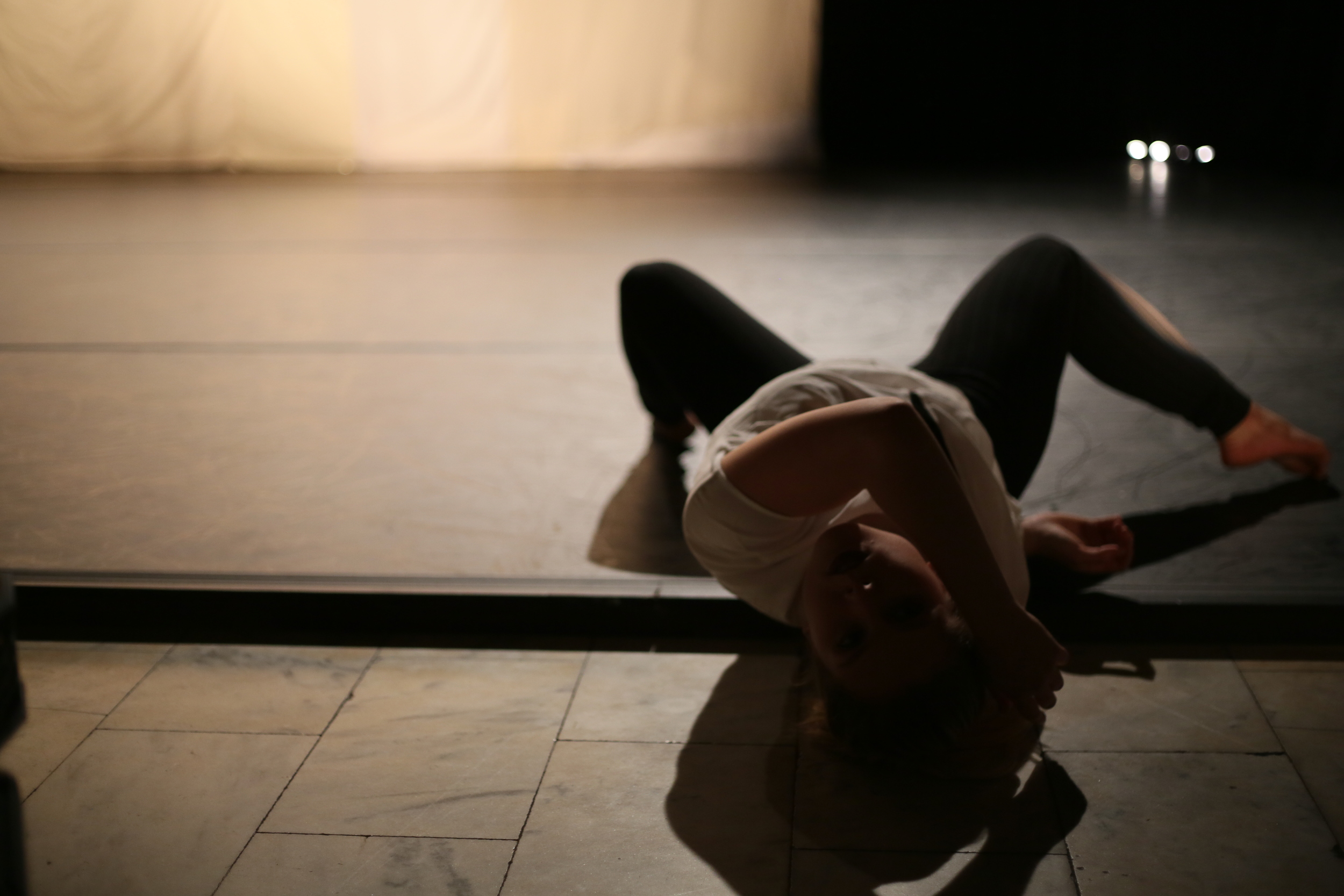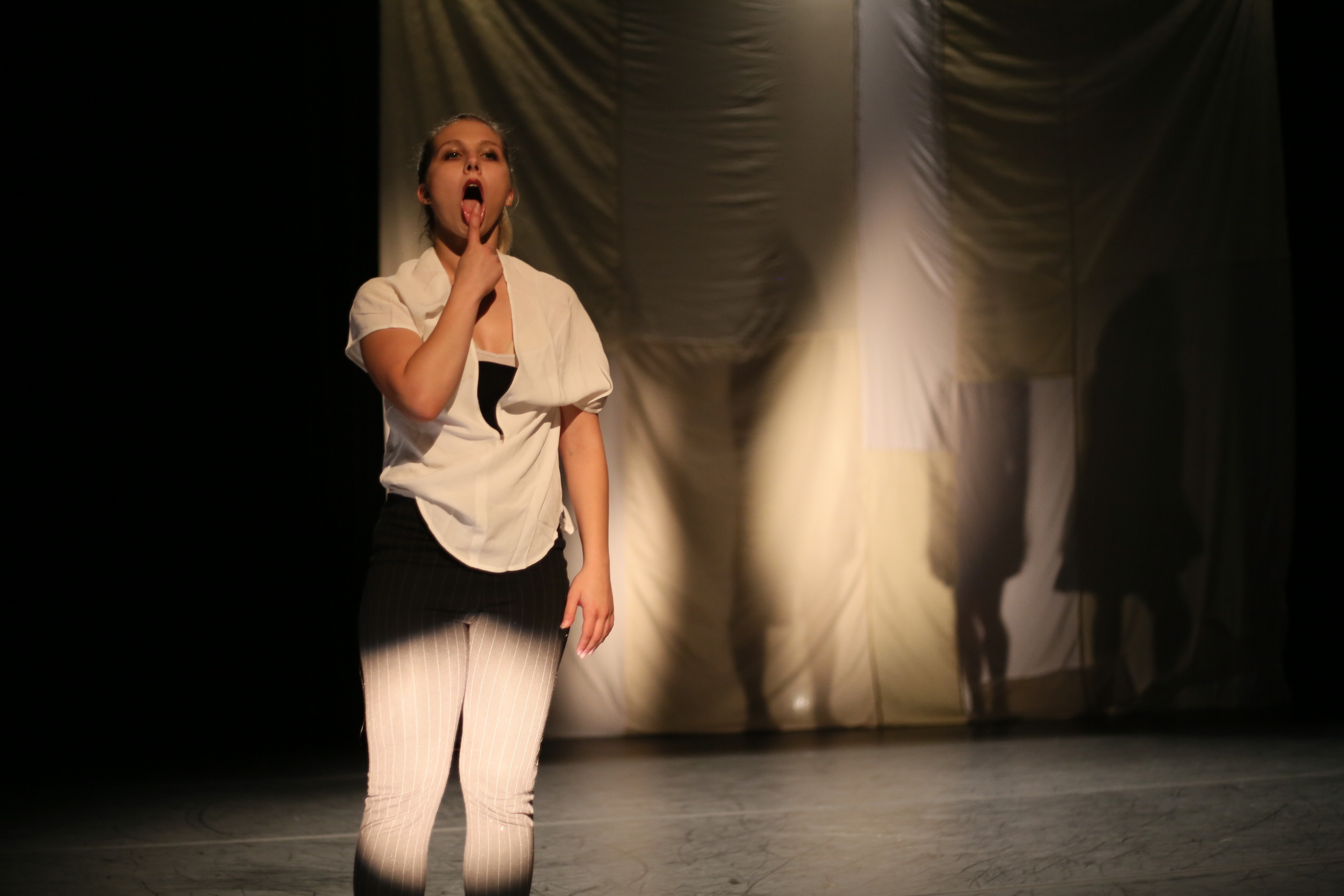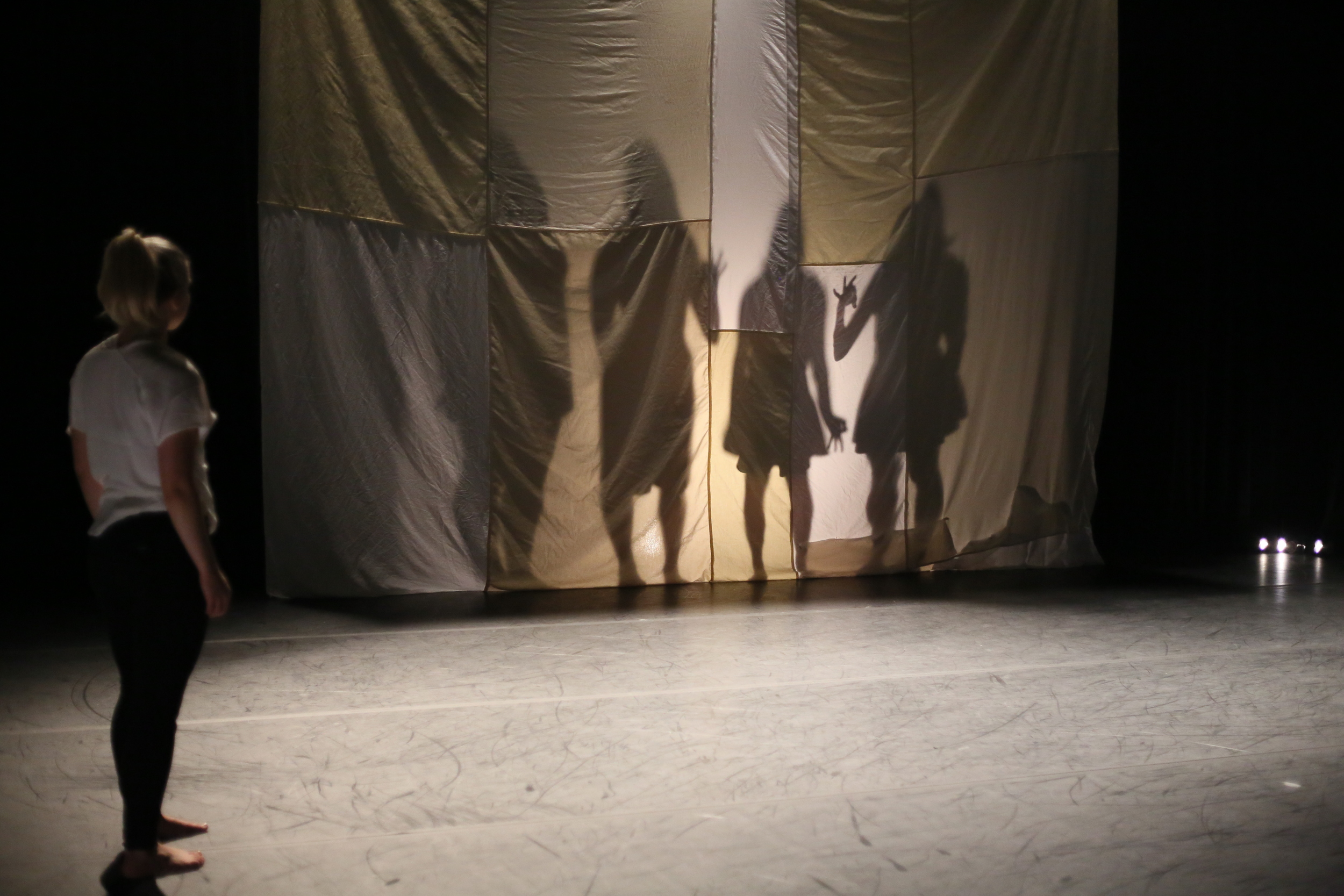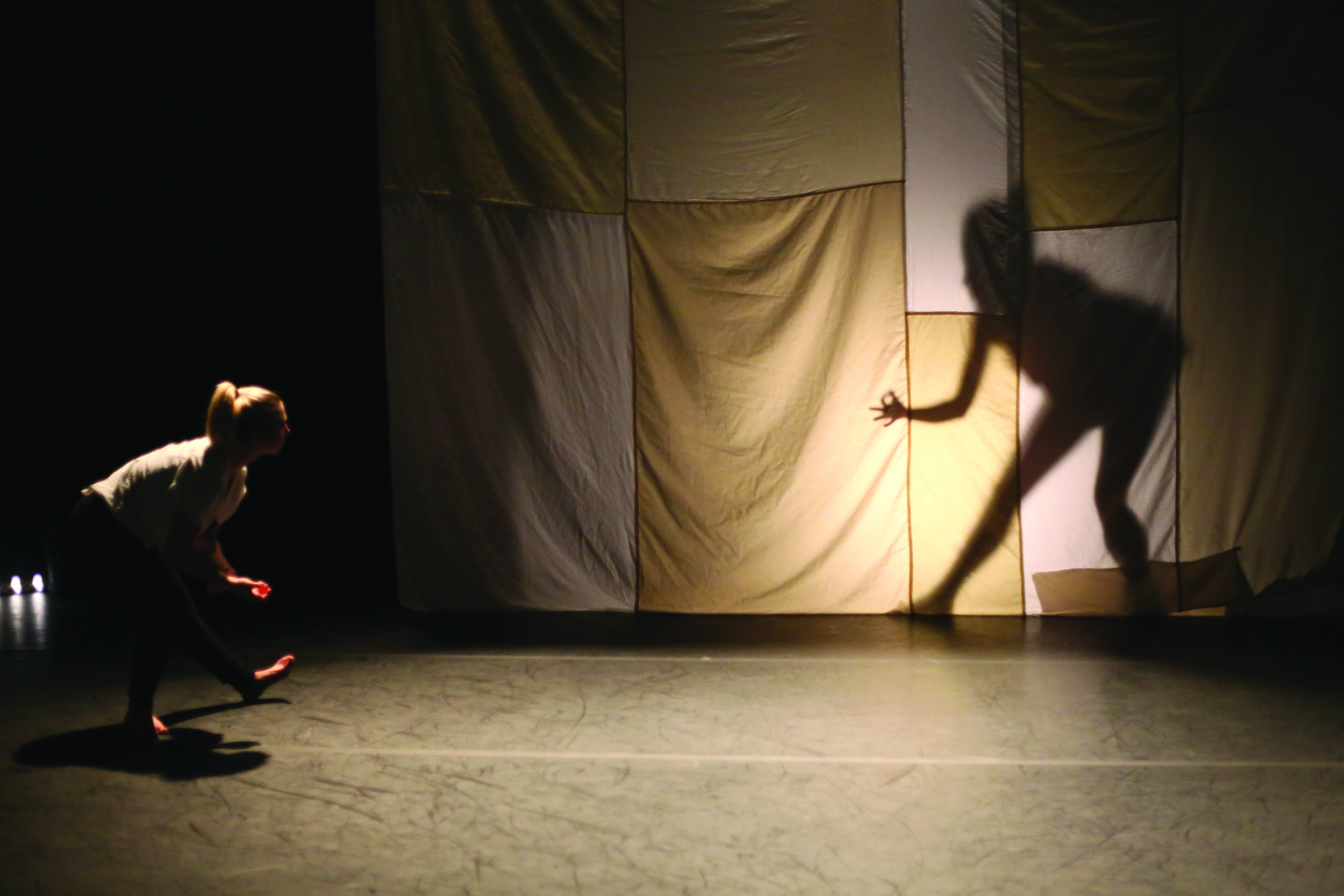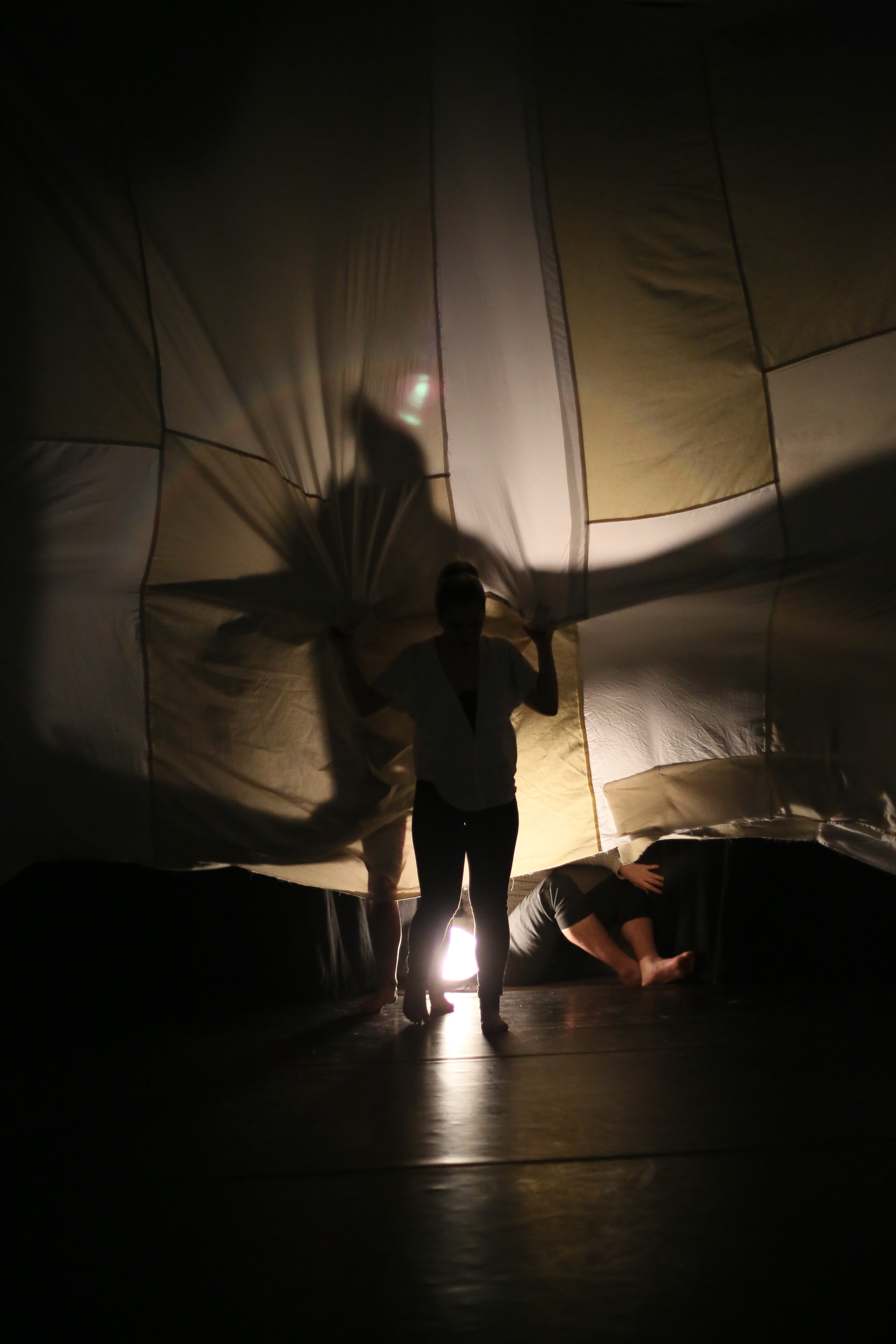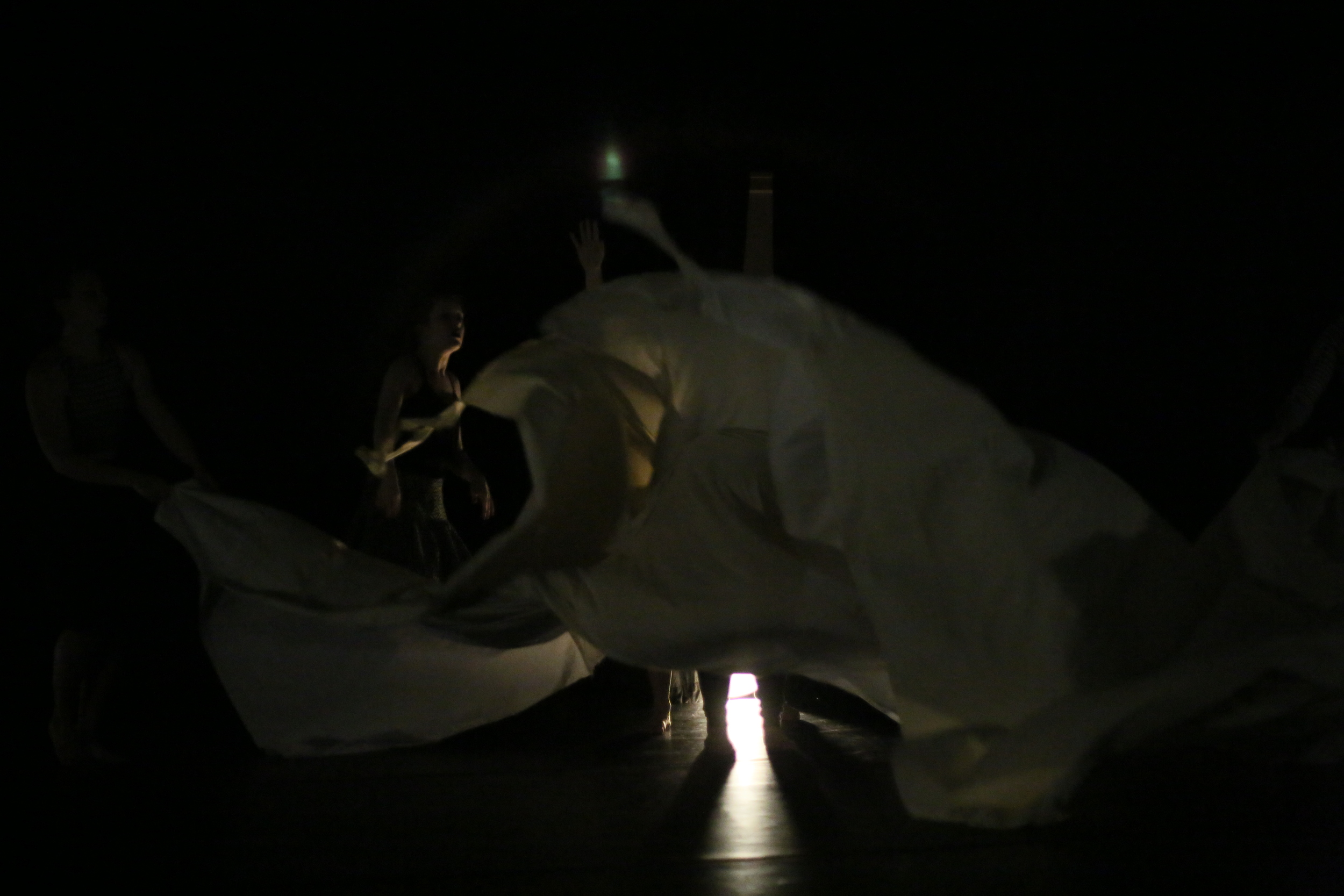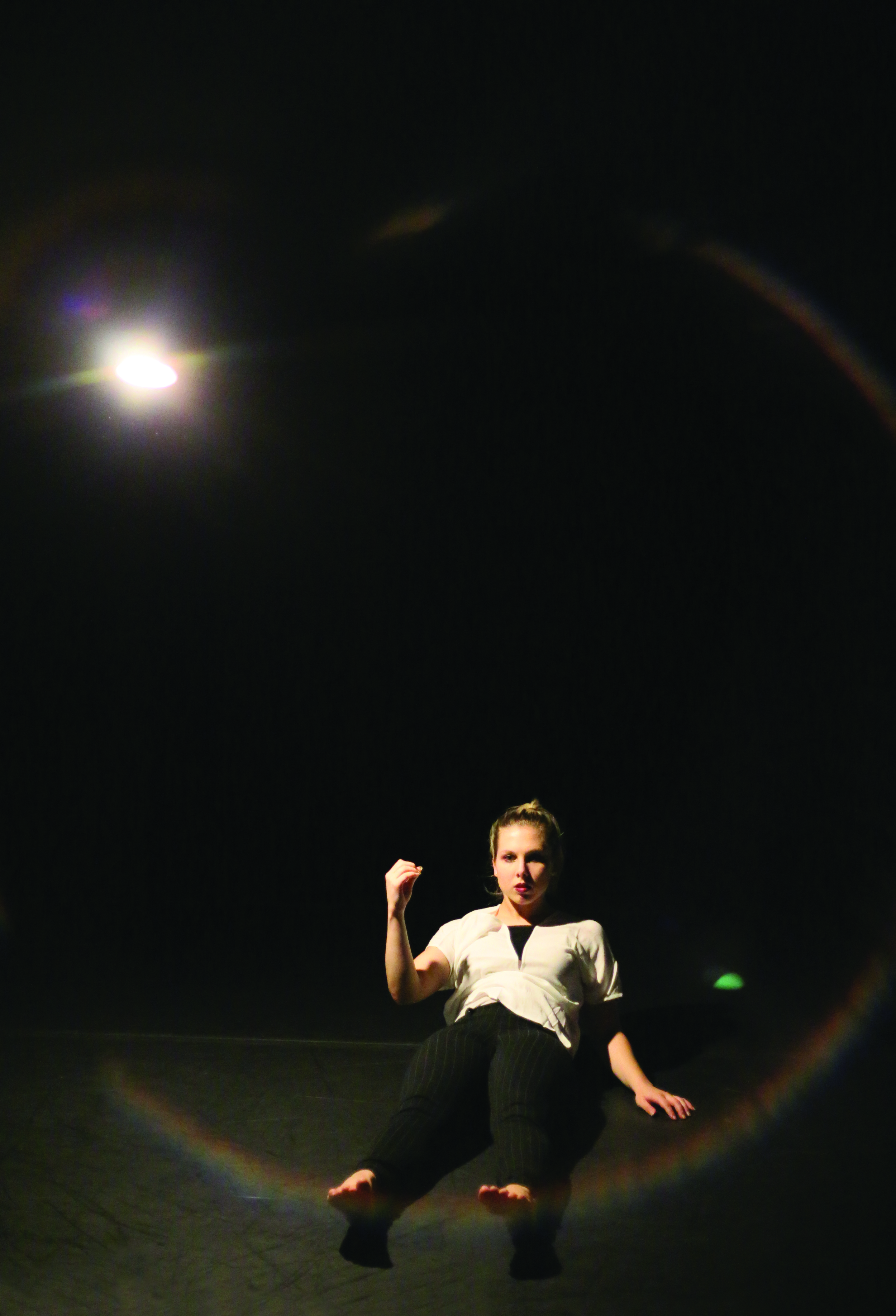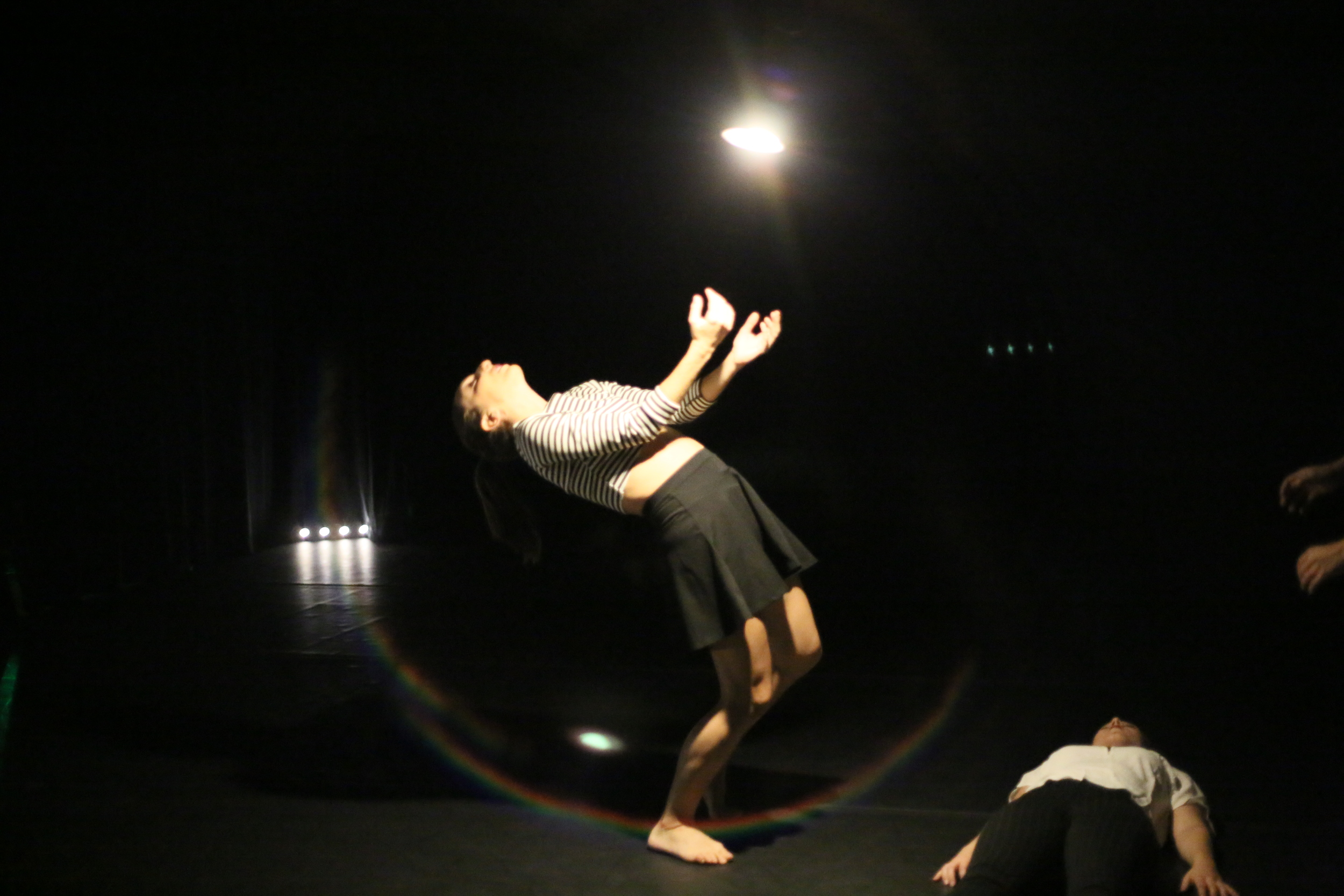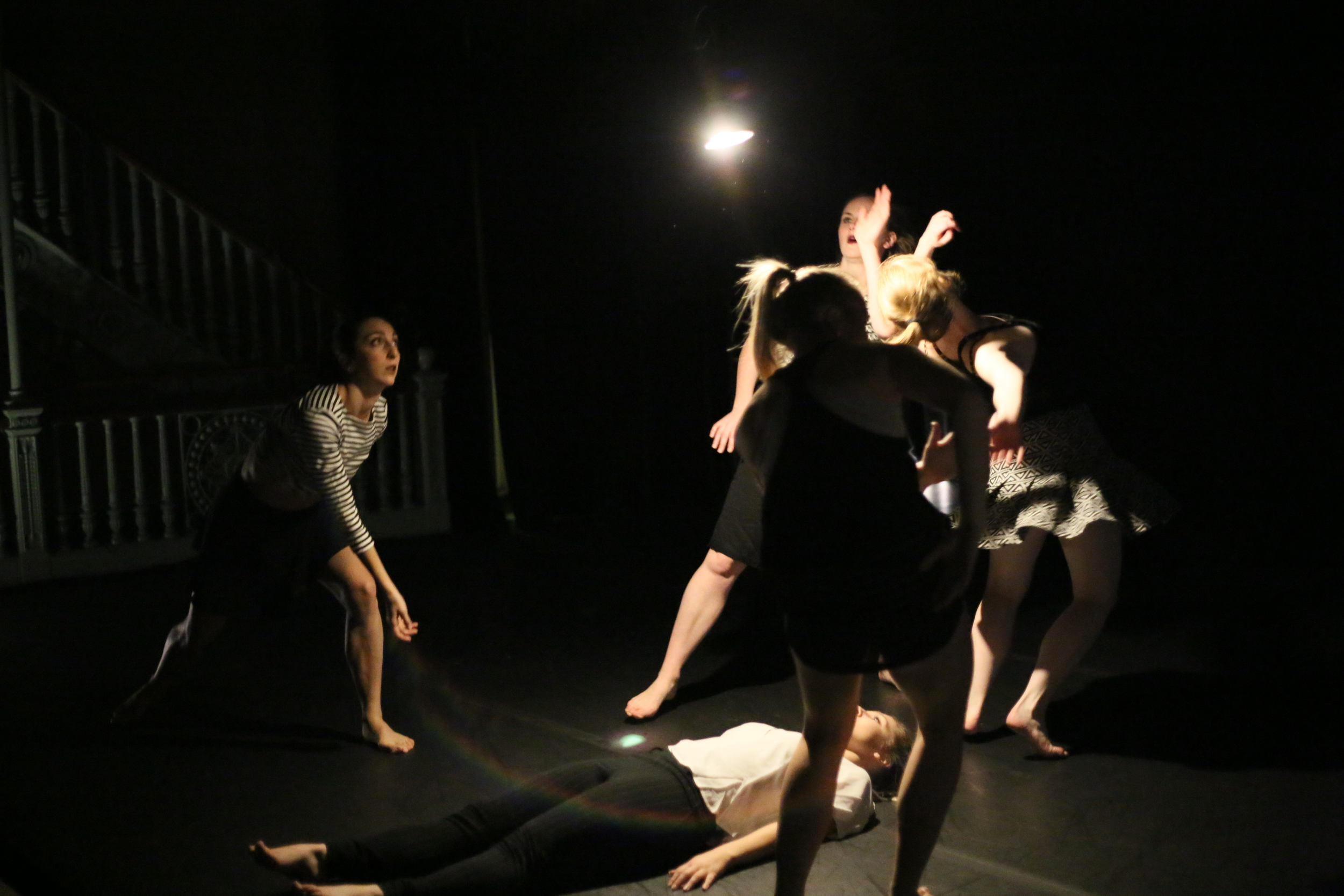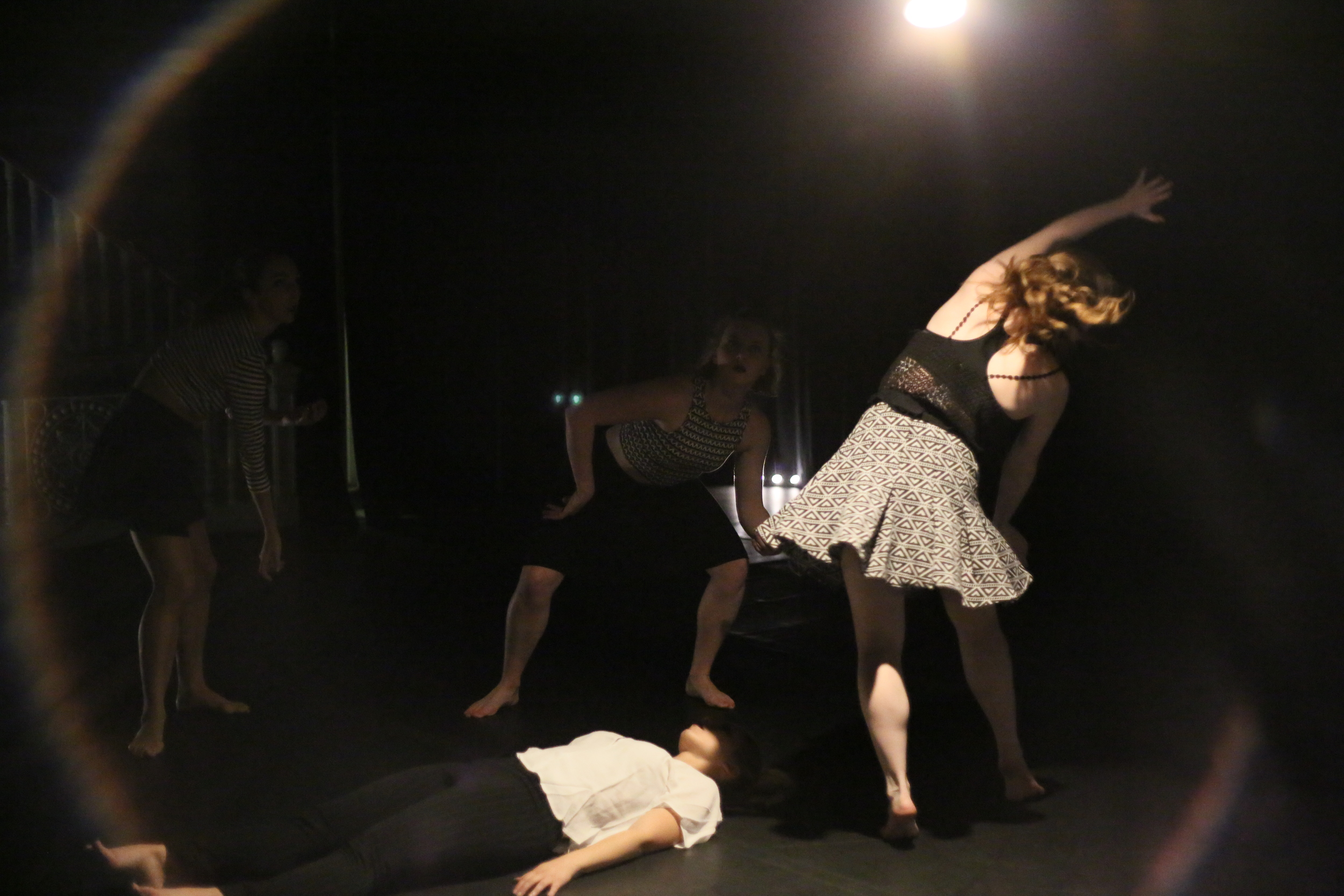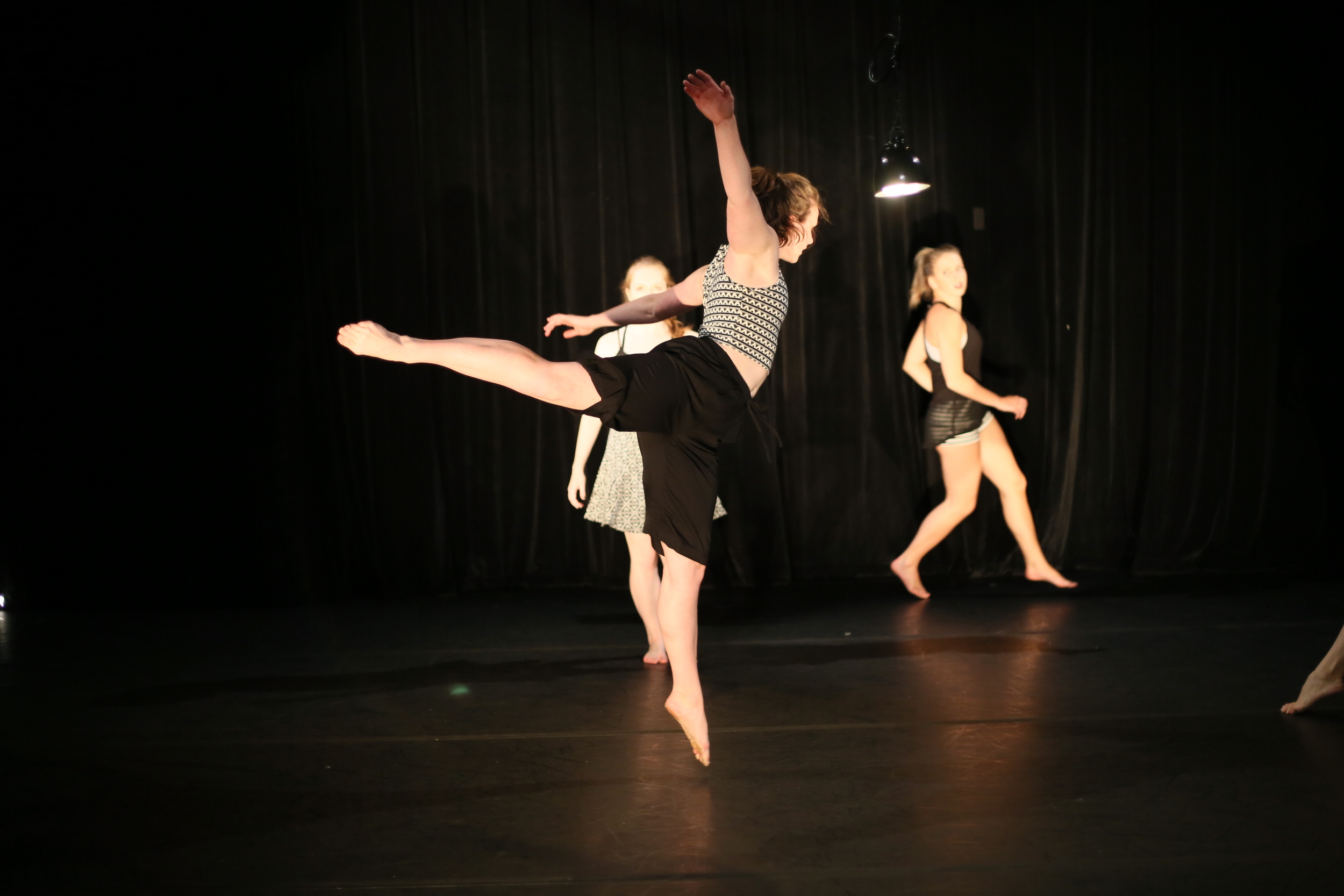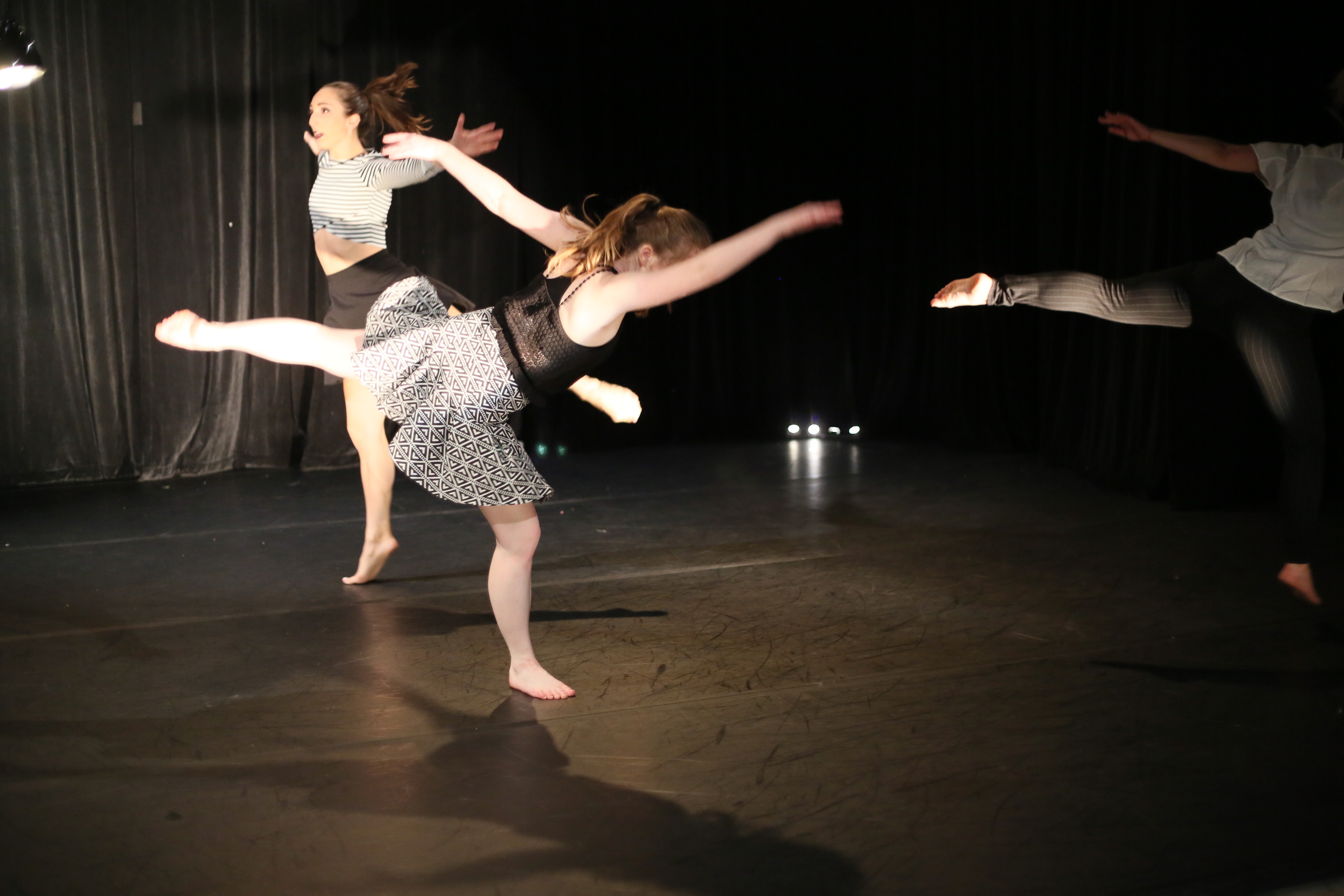A Note from Kim: Last fall I wrote a blog post regarding dance audiences' wariness of 'understanding' a modern dance performance instead of just sitting back, taking it in, and discussing genuinely without feeling the need to 'get it right'. Read the original post here. In my ramblings on how to remedy this issue I forgot about a major tool... Monkeyhouse's SPORKS (this will make sense if you keep reading), which so brilliantly and humanly ease audiences into talking about dance. Karen Krolak has graciously contributed the following entry to explain her monkey-methods for the betterment of dance viewers everywhere, and I'm grateful for her kind reminder that we as artists can help our audiences feel comfortable and get involved. Don't forget to share your thoughts post-reading!
Rethinking Q & As
By Karen Krolak
Leading a SPORK after Luminarium’s Spektrel at the Multicultural Arts Center. I am the one with the spider fascinator on. Goofy headwear also helps make the conversation less intimidating. (Photo by Jason Ries)
Before Monkeyhouse’s tour in 2001, my dear friend Fred, a family therapist, suggested that Monkeyhouse organized regular company meetings to discuss problems of life on the road. Each person who brought a complaint, however, had to also bring at least two ideas for how to improve this problem. It was a helpful strategy that lowered the tension level in the van. Oddly enough, it is also how I discovered that everyone went to sleep much earlier if they put me in a separate room…but I digress.
One of the things that artists and audiences frequently bemoan is the post show Q & A. Raise your hand if you have ever been to one that has felt awkward, stilted, or just plain uninformative.
Exactly.
While it could be easy to simply stop attending/hosting Q & As, they can provide necessary insight for both the artist and the audience. Especially now that the number of dance writers is decreasing at newspapers and magazines, these dialogues become even more valuable when done productively.
So in the spirit of Fred’s wisdom, Monkeyhouse began brainstorming about how to improve the Q and A process. We began by renaming our events as SPORKS -forking out questions and stirring up conversations about choreography. This may seem like a small detail but reframing the experience to be about questions and not answers made a huge difference for getting people on both sides to relax a bit more. Nobody is seen as the all knowing expert. Audience members no longer feel ignorant. Artists no longer bear the onus of being able to answer every question thrown at them.
Second, we invite someone to be the moderator. By having someone begin the questions, you do not have to wait for a brave soul to finally speak up. It also gives the artist some reassurance that the first question will not attack their creation. In a best case scenario, the conversation quickly spreads to comments and questions from both sides and the moderator can recede a bit. I love it when audience members begin debating ideas at our SPORKS. Even if that does not happen, however, the moderator can keep people chatting and avoid those pregnant pauses where everyone just stares expectantly at each other.
In choosing our moderators, we look for people who are curious, humble and naturally smile a lot. This last quality may sound frivolous but smiling at people as you ask questions can help open them up. Russell Holman, host of Luminarium’s Backlight Boston, is an excellent moderator by the by if you are ever looking for someone.
It helps tremendously if the first couple of questions encourage the artist to tell a story about their process or about their background. Not only does this prevent people from giving one word answers but it also humanizes the artist. In turn, we find that the audience tends to respond with more supportive questions rather than with harsh criticisms or off topic comments.
While they often occur as pre- show or post-show events, Monkeyhouse’s SPORKS can happen at any point in the production of a work and they can happen anywhere. We have had them at people’s homes, in restaurants, etc. Sometimes just changing the venue so that everyone is sitting around a table can make the conversation more lively.
Obviously, there are many more ways to improve Q & As and I would love to hear about ideas that are working in other organizations. Liz Lerman’s Critical Response Process is a marvelous guide for people who are looking for more resources.
Are you an artist? Audience member?
Have you had a positive or negative talkback experience? Attended a Monkeyhouse SPORK?
None of the above?
Any and all thoughts are welcome below!
Karen Krolak is a free range collaborator and a curator of experiences based in Boston, MA. Since 2000, she has been the co-founder/Artistic Director of Monkeyhouse, an award winning non profit that connects communities with choreography. Her creative works involve some combination of choreography, text, fiber arts, and storytelling and have been presented regularly throughout New England and in New York, San Francisco, Chicago, Philadelphia, Rome, and Winnipeg, Her favorite collaborators are Nicole Harris, Jason Ries, Kwaq7aj', Ralph Farris, Anne Howarth, and Barry Duncan and she is a huge fan of Luminarium. She earned her B.A. in Linguistics at Northwestern University and is currently pursuing an MFA in Interdisciplinary Arts at Sierra Nevada College. Much of her recent work has centered around the theme of finding physical poetry in imperfect bodies and around mourning as she grapples with the car accident that killed her mother, father, and brother.


